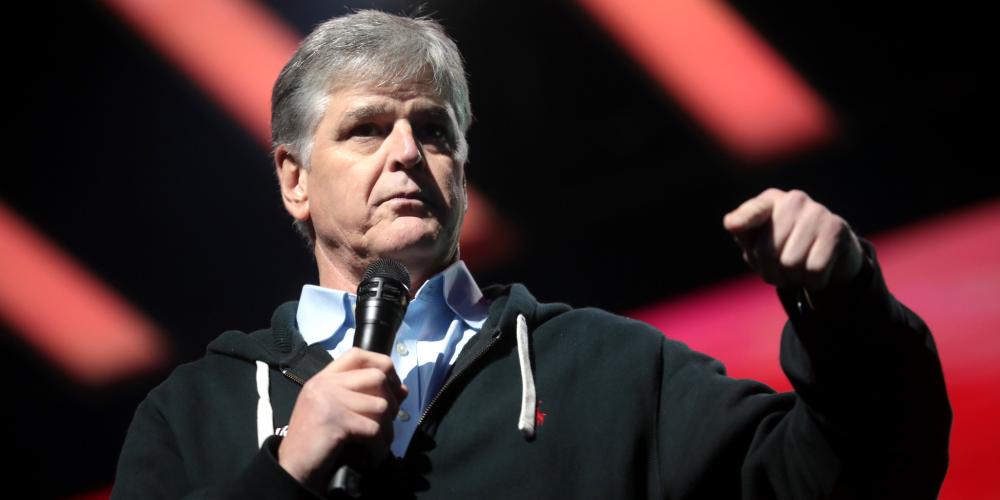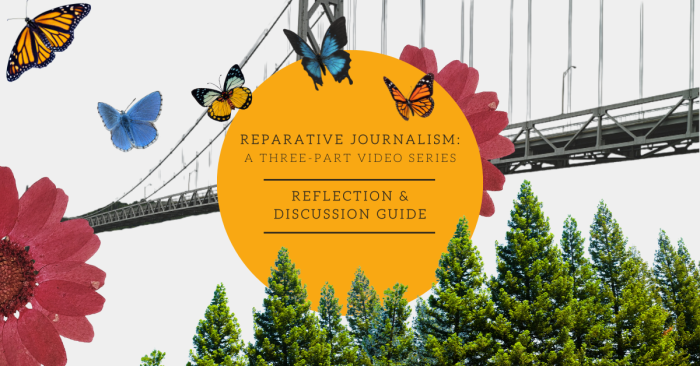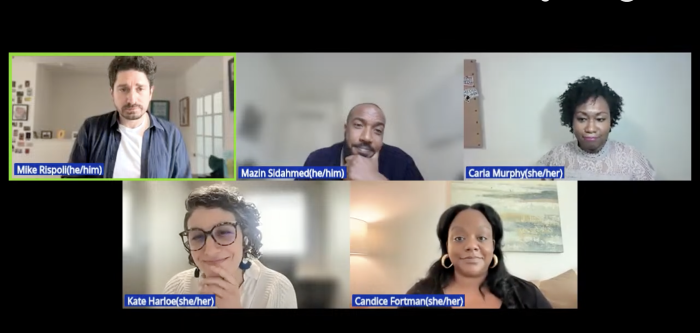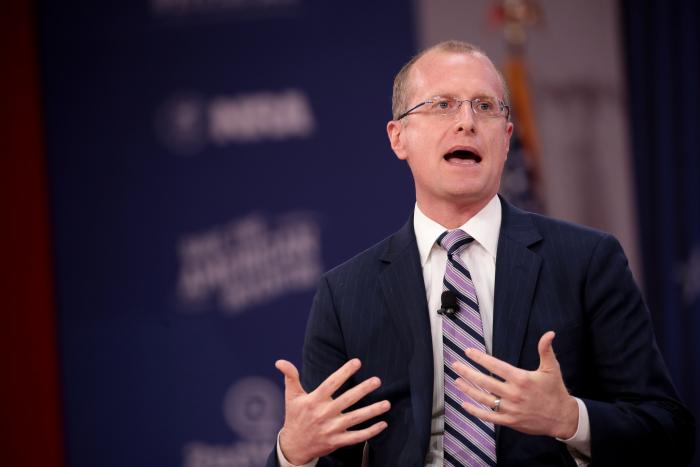COVID-19, the Media, Racism & Our Fragile Social-Safety Net

The coronavirus has exposed the great inequities in our society for everyone to see.
It has exposed the hollow proclamations made by politicians who boast we are the richest and most powerful country in the world yet struggle to address the basic needs of its people during a pandemic. It has exposed how unprepared we are to deal with a national health crisis when the president is a narcissist and a racist.
But it has also exposed the weakness of our media system, which has allowed powerful media figures and companies to orchestrate disinformation campaigns at the expense of the public’s health and safety.
Rampant misinformation
Having access to truthful information is a life-and-death issue during a disaster. But the right-wing media, led by Fox News, downplayed the threat of the coronavirus for weeks to protect a president who has repeatedly lied about the dangers of the pandemic and the government’s failed response to the crisis.
“The coronavirus pandemic provides a rigorous case study in the priorities of most of the conservative press: Faced with a choice between informing their own audiences about dire threats to public health and propping up a Republican president, they chose the latter, because informing the public is not their job,” wrote Adam Serwer, staff writer for The Atlantic. “The job of outlets like Fox News is to ensure that the conservative masses believe that their leader is infallible, even if it causes them tremendous personal harm.”
Fox News personality Sean Hannity has been a leader in propping up Trump and his lies. In recent weeks, he has used both his iHeart Radio show and his Fox News program to downplay the threat of the virus.
He said on his radio show that Trump’s opponents “are hoping Americans die and get sick and that we all lose a fortune in the stock market.” And on his cable program, Hannity claimed that Democrats are “sadly politicizing and weaponizing an infectious disease as their next effort to bludgeon President Trump” and that “twenty-six people were shot in Chicago alone over the weekend. I doubt you heard about it. You notice there’s no widespread hysteria about violence in Chicago.”
Meanwhile, right-wing radio host Rush Limbaugh said on his March 11 radio program that the “coronavirus has been weaponized by the media and by opponents of Donald Trump as the latest weapon they might be able to use to get rid of him or to damage his political standing” and that “it’s almost as if the media and the left and the Democrats want to inflict damage on our economy.”
But Fox News changed its stance after the coronavirus outbreak forced Trump to declare a national emergency on March 13. And even with that, the network is now featuring commenters and guests who support the president’s reckless call for people to go back to work while the number of people getting sick and dying continues to skyrocket — with the country now leading the world in confirmed cases.
“Misinformation can be fatal, and that’s why Americans need to be more vigilant and shrewd about the media that they consume, especially now,” wrote Jamil Smith, a senior writer for Rolling Stone. “That is the lesson that we all should be conveying, particularly those of us in the press.”
Racist narratives and our weakening social-safety net
This pandemic should also force our nation to address how political leaders, especially right-wing politicians, have long used racist narratives to launch disinformation campaigns — all in an effort to pass racist policies that benefit corporations but hurt working people and harm our social-safety net.
“For the past 40 years, the right wing has peddled a winning strategy,” wrote Heather McGhee of Demos in 2016. “It sells the economic agenda of the 1% to working- and middle-class white voters through a hidden formula: Fear People of Color > Hate Government > Trust the Market and the 1%. And they've been selling us this idea even as it has hurt Americans of all races whose wages have plummeted and economic insecurity has soared.”
She noted that President Ronald Reagan used this tactic to “[give] us the fictional character of the ‘welfare queen’ to prey on resentment against struggling African American families”. The real targets, wrote McGhee, were government and labor unions because they were “the only public institutions powerful enough to hold corporations and the wealthy accountable.”
Democratic administrations have also adopted racist narratives to push policies to weaken the social-safety net. President Clinton did so to pass the crime bill and welfare “reform” bill that punished Black and Latinx communities. And now Trump and the right-wing media are using racist tropes to blame the Chinese for the coronavirus outbreak in an effort to deflect responsibility for the administration's failed response to the pandemic.
The mainstream news media are culpable too: Prominent outlets like the New York Times have used pictures of Asians and Asian Americans in their coronavirus coverage, even when such images had nothing to do with the topics of individual pieces. These photos have contributed to the xenophobia and racism Asian American communities are now facing in our country.
This is nothing new: The mainstream and white-owned news media have a long history of adopting and reinforcing racist, right-wing narratives in their coverage of policies that impact communities of color.
“There is no question that the right wing has exploited the unwritten rules of media reporting and coverage to change the written rules of policy,” wrote Rashad Robinson, the executive director of Color Of Change. “With widespread and harmful effect, they have done so not only through their own media platforms but also through their influence over purportedly neutral and evenhanded news outlets across the country.”
In 2017, Color Of Change and Family First released a study that found that Black families were far more likely than white families to be portrayed in news coverage as living in poverty, receiving welfare, being bad parents and being associated with criminality.
The study found that Black families represented 59 percent of coverage in “news and opinion media” about poverty even though they made up just 27 percent of poor families in our country. However, white families represented just 17 percent of the poor in news coverage even though they made up 66 percent of all poor families.
Given this kind of bias, it’s not surprising that research has found that “when whites feel their status in the racial hierarchy is threatened,” they oppose welfare due to the mistaken belief that such programs disproportionately benefit people of color. In reality, white people are the biggest beneficiaries of these programs.
According to NPR, a 2016 Center of Budget and Policy Priorities study found, for example, that “white people made up the largest share — at 52 percent — of people lifted from poverty by safety-net programs, while black people made up less than a quarter of that share.”
But a 2018 study found that “racial resentment” was a factor in why white people opposed welfare programs.
“We find evidence that welfare backlash among white Americans is driven in part by feelings that the status of whites in America is under threat,” Rachel Wetts, one of the study’s researchers, told NPR. “We didn’t find that they wanted to support programs that benefit whites when whites’ incomes are declining. Instead, we found they wanted to cut programs that they perceived as benefiting minorities.”
But the inequities in our society mean that millions of poor white people will be harmed by the pandemic — which our nation’s weak social-safety net will not shield them from.
The coronavirus pandemic will most impact people of color — in particular Black and Latinx women — since so many have to work (or have lost their jobs), can’t afford to shelter at home, live in dense cities, do not have sick leave, are underinsured and live with greater stress.
And because of these inequities, communities of color and poor people are in poor health and are more likely to develop health conditions such as diabetes and heart disease, which places them at greater risk of getting sick and dying from the coronavirus. These factors also make it harder to control the spread of the virus, which does not discriminate.
“These things are so interconnected,” Nicole A. Errett, a public-health expert, recently told The New York Times. “Pre-existing social vulnerabilities only get worse following a disaster, and this is such a perfect example of that” because it puts “the broader society at risk.”
But things can get worse.
Congress is about to pass a massive $2-trillion stimulus package that many fear will bail out the big corporations but fail to do enough to support laid-off workers and poor families. Meanwhile, the Trump administration is fighting in court to strip nearly 700,000 people from receiving food stamps despite the pandemic. The administration is also seeking to destroy the Affordable Care Act in a Supreme Court case that could leave millions more people without insurance.
This is why the struggle to protect and expand the social-safety net and deal with our nation’s inequities must also address the disinformation campaigns and racist narratives promoted by politicians and amplified by the media — resulting in policies that benefit the few at the expense of the many.
These inequities have ruined lives for decades and will result in killing thousands of people — perhaps millions — by the time this pandemic ends.
It does not — and should not — have to happen.





